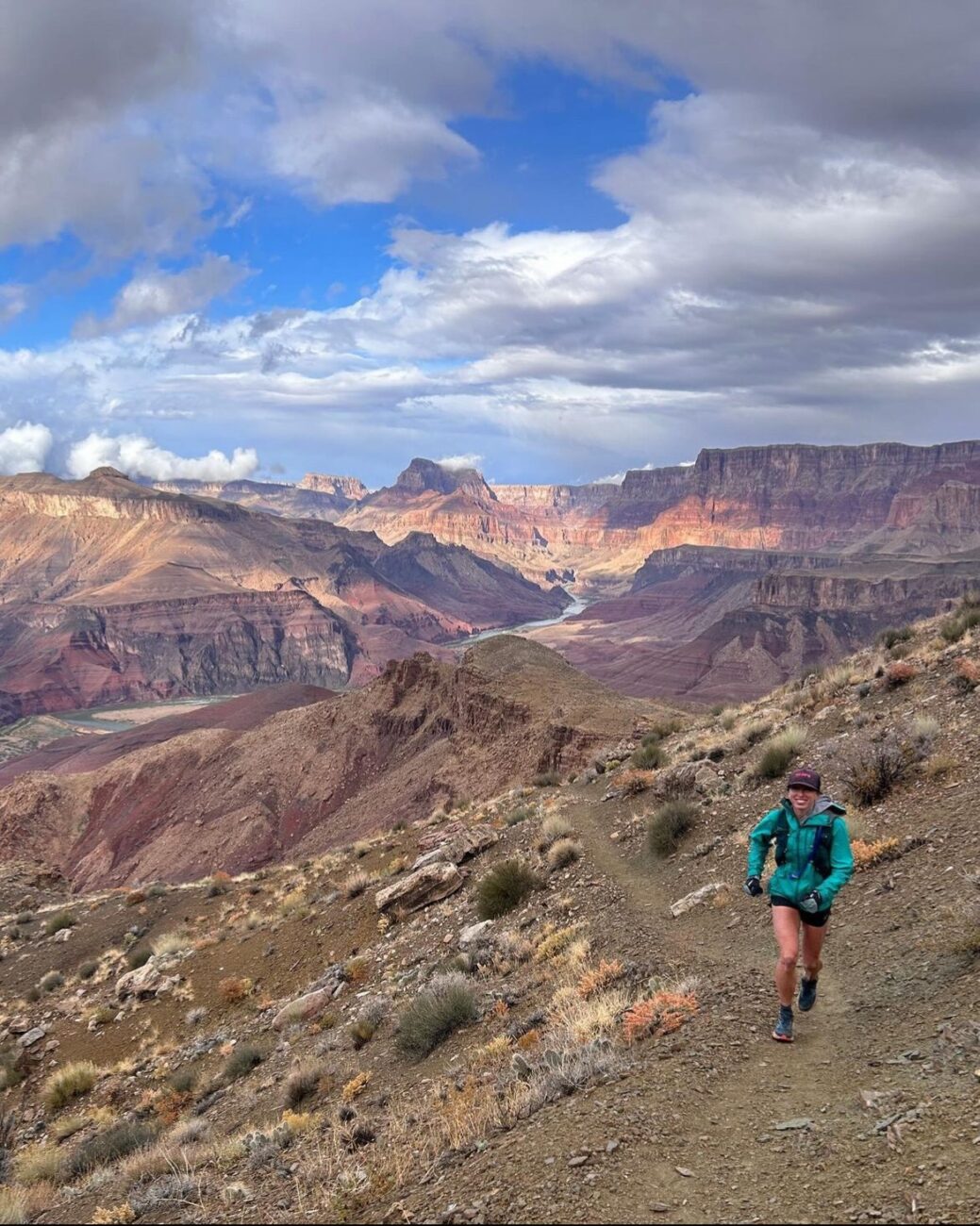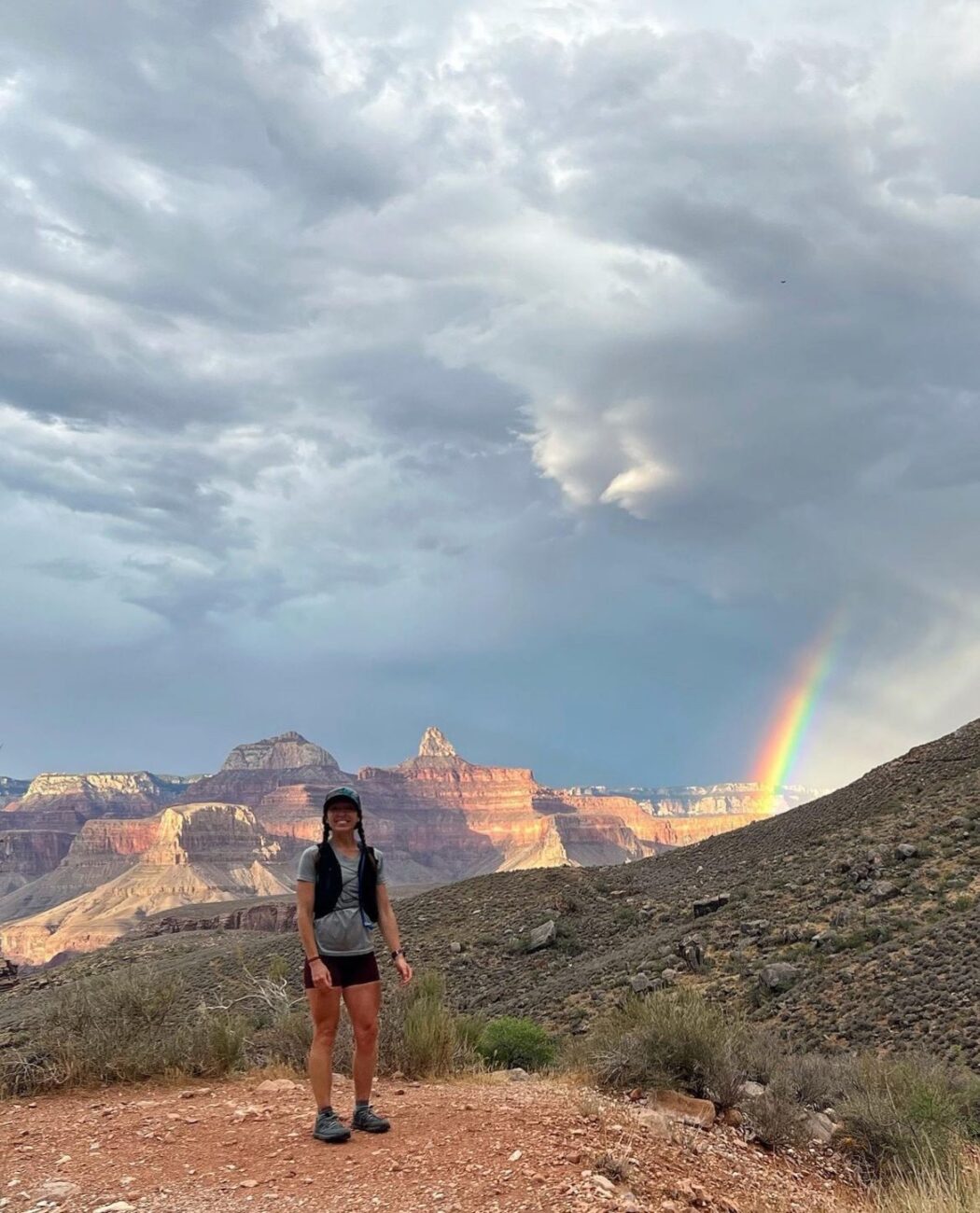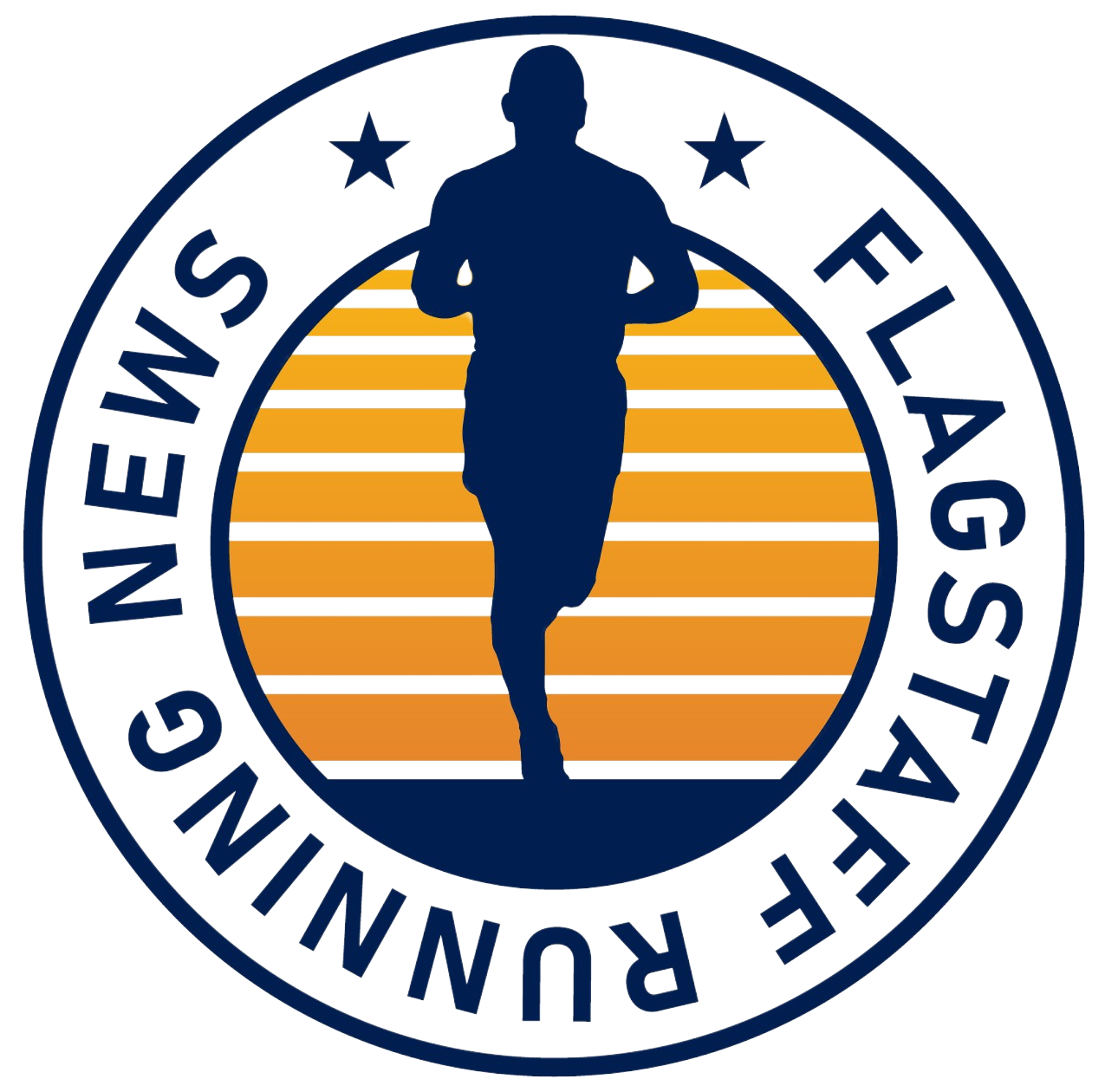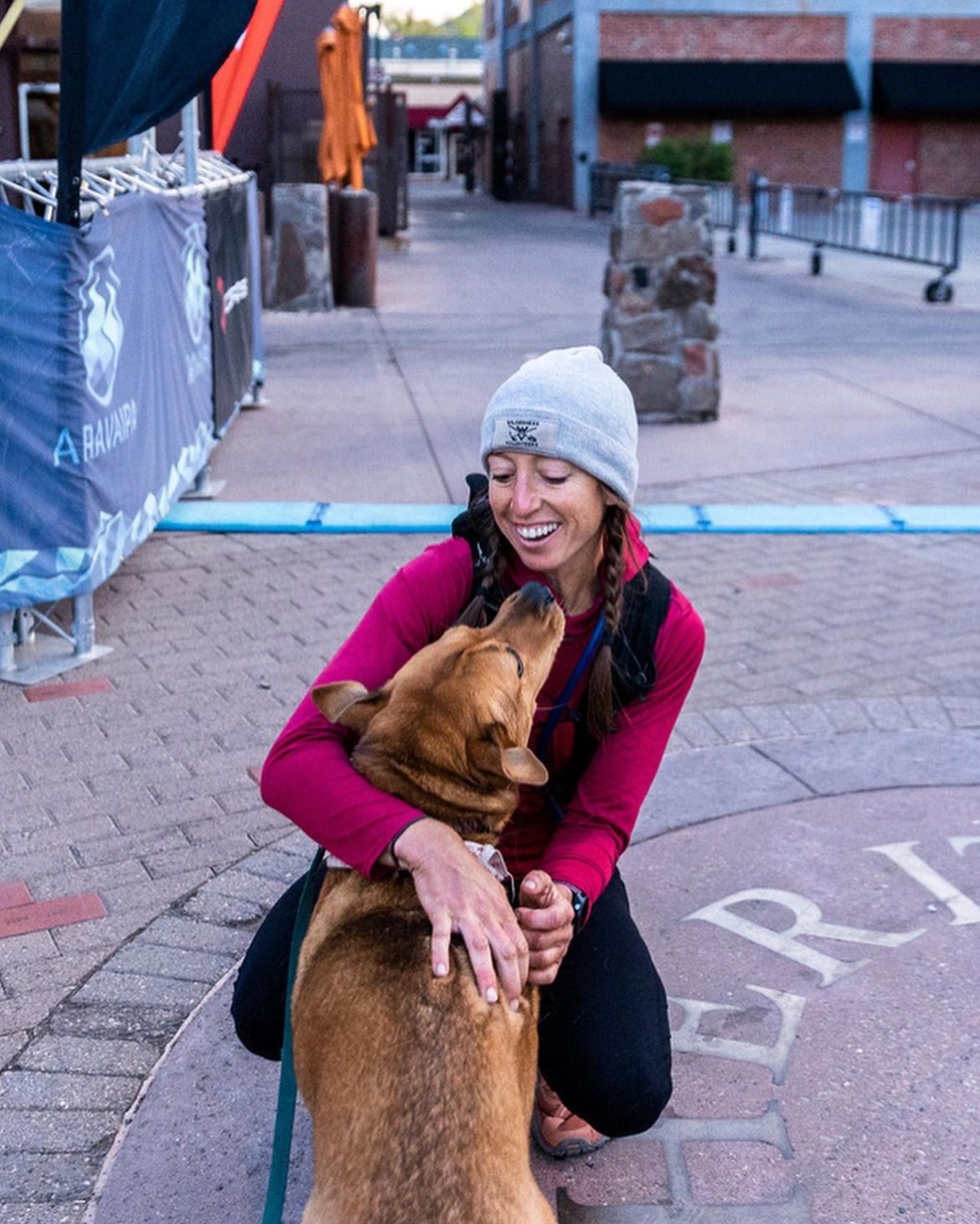This is another in a series of profiles of Flagstaff runners who will be tackling the Cocodona 250 next month from Black Canyon City to Flagstaff.
She doesn’t wear a watch, not anymore. In this data-driven, Strava-obsessed age, that almost amounts to heresy among hard-core runners – or, at least, being labeled a Luddite-like throwback to simpler times.
But simple times are what Carrie Henderson seeks these days. Thus, running sans smart watch – no GPS, no heart-rate monitor, no splits, no nothing – works for this ultrarunner. Keeps her grounded. Focused on the task at hand, not metrics. Keeps her from thinking about her lone running nemesis – herself.
See, back in 2022, when Henderson first ran the Cocodona 250, that ultra-ultra-sufferfest heading from Black Canyon City to Flagstaff, she did it not necessarily as a lark, but without lofty expectations to weigh her down. She just went out and ran, put one foot in front of the other for about four days, enjoying time spent with her pacers and crew, soaking up the atmosphere of the Arizona environs, working through the inevitable low moments and savoring the highs.
And so, of course, she did well, finishing as the sixth woman, 25th overall, in 91 hours 43 minutes 32 seconds. That smile on her face at the finish line, embracing her beloved mutt Chloe, tells you all you need to know about Henderson’s race experience.
OK, then came May of 2023, and Henderson’s return to Cocodona. This time, self-expectations were high, and Henderson put in a rigorous, mileage-heavy training build during the Snowpocolyse that was winter in Flagstaff. Maybe she could do even better this time. Perhaps make the women’s podium. At the very least, improve on her finish time from 2022.
And so, of course, she DNF’d. Did not finish. Henderson, mentally spent if not physically exhausted, dropped about halfway through Cocodona, in Jerome.
“When that thought, ‘Oh, I could do better,’ entered my brain, said Henderson, 34, “that’s what ultimately derailed me.”

What Henderson lost was more than the race; it was the joy in the effort. The executive director of the nonprofit Wilderness Volunteers, Henderson is not a professional trail runner, doesn’t have shoe and hydration endorsement deals, but she’s a really good runner. Especially when she goes into an event with the same low-key attitude she takes when doing long adventure runs in the Grand Canyon or the San Juans in Colorado: just to compete with herself and soak in the experience.
On May 6, her third Cocodona attempt, she’ll line up with the mindset of the Carrie of 2022, not 2023. If history holds, this bodes well for her to have a good effort in the race, perhaps even better than her initial result.
It’s a healthier mental outlook, which may take minutes, even hours off her result. Not that Henderson figures to notice, in situ. Remember, she has ditched the watch during training and is mulling not even wearing it during the race. No slave to the clock, she.
“I thought it was going to bother me,” she said of having no device strapped to her wrist, “but it didn’t at all. First, there are plenty of loops I do where I know the distance because I’ve done them so many times, especially in the canyon. But, yeah, when I look at my Strava, it’s like, zero, zero zero…
“I’m learning towards not wearing it (in the race). I was just talking with a friend about this. Part of me wants to, because the first year, I had an older watch and it died before I got to Whiskey Row (Mile 78) and was able to recharge it. So, I was never able to upload that total 250 mile distance. It would be kind of fun to see that on Strava. But the more I thought about it, the more I’m thinking no.”
Henderson laughed about her decision to Strava or not Strava. She is a dichotomy, both laid back and intense, depending on the situation. Mostly, though, she bends toward the mellow adventure seeker than the fierce competitor. About the only time you’ll see her lose her temper is with people who misuse the trails, leaving trash or debris. That, after all, is her job and true passion – keeping the outdoors healthy and accessible to all.
“To me, something like Cocodona feels like an adventure, your own journey. It’s like self-imposed pressure. But at the end of the day, it’s just trail running; it’s not that serious. Even for the best of the best, no one knows who you are. We’re not playing in the NFL, and people sometimes take races so seriously.”
Carrie Henderson
Last year’s great expectations for Cocodona, she hopes, will be a one-off. Her eyes widen when talking about 2022, but she looks away when talking about 2022. Both experiences affected her greatly.
Regarding 2022: “Going in, well, I don’t race a lot – I’d never run more than 80 miles.That was Hole to Hump (Grand Canyon to Humphreys Peak) with a friend, so it wasn’t a race, just our own thing. I had no idea what would happen (in Cocodona) after mile 80. I went in wanting to finish; that was my only goal. And to have fun with my pacers, make sure my friends were having fun and I wasn’t being miserable. I felt great for almost all of the 250 miles. A couple of low points. But overall – maybe it’s because this was two years ago and I don’t remember the low points as well; I heard your brain doesn’t remember pain very well, which is why women have multiple babies – it was a great experience.”
Regarding 2023: “My whole thing last year was: do better. Rank higher. Sleep less. … My mental game was not there. Early on, I was in sixth or seventh place for the first 130 miles before I dropped, but in my head I was like, ‘I should be higher up.’ I thought I was going to do better. It really was getting to me.”
She had, after all, trained more for 2023. She put in the miles, which led to fatigue and minor (“niggles”) injuries. She’d leave snowy Flagstaff and drive to Sedona to run dry trails several times a week, difficult to swing when she works full-time.
“I felt like I had to do it, get those miles in,” she continued. “In the race, it was all mental. Physically, I felt OK. I mean, as well as you’re going to feel running 130 miles on gnarly trails. I was on track. I had my little spreadsheet for my pacers with my ETAs and I was hitting them, but I wasn’t having fun. This is why I run, to have fun and get enjoyment out of it. And I just wasn’t at all, so I dropped in the middle of the night (Jerome aid station). I immediately regretted it. I went to sleep and a few hours later when I woke up I was like, ‘That was the wrong decision.’

“I didn’t think it was going to bother me as much as it ultimately did, DNFing. For weeks after that, I was really struggling with that decision, especially because when people are throwing up uncontrollably or if you get injured during the race. For that, you feel like you have to stop. But me? Physically, I was OK. My feet were fine. A lot of things were fine.”
Henderson’s partner, ultrarunner Austin Corbett, was pacing Henderson on that segment in Jerome that proved her demise. Corbett, who’ll be running Cocodona himself this year, said she was in no shape to continue.
“When she got to Jerome, she was in pretty rough shape, mentally,” Corbett said. “She laid down to sleep, and I was sitting in the car with her and we were talking and she’d fall asleep while we were talking. I was like, ‘Do you really want to keep on being this miserable for another two days?’”
The answer, ultimately, was no.
Corbett thinks it was the proper decision, though Henderson still harbors some regret. He believes Henerson is ready to return to form this May.
“She wasn’t excited about it (last year), and she put pressure on herself to perform and beat the other women,” Corbett said. “She’s competitive, but I don’t think she cares at the end of the day about results. She just wants to have an adventure. She’s changed things about her training, like not wearing a watch and focusing on having fun and getting out with her friends and not taking everything too seriously.”
This time, Henderson is serious about not taking things seriously.
“To me, something like Cocodona feels like an adventure, your own journey,” she said. “It’s like self-imposed pressure. But at the end of the day, it’s just trail running; it’s not that serious. Even for the best of the best, no one knows who you are. We’re not playing in the NFL, and people sometimes take races so seriously. It’s just moving through landscapes, through canyons and mountains and that’s what’s so special about it.”
Moving through landscapes, either fast or slow, has always appealed to Henderson. She grew up in DeKalb, Ill., an hour west of Chicago, and ran on her high school cross country team, though she called herself “slow.” She started running marathons just for the challenge in college at the University of Illinois and came to love the physicality and the camaraderie.
“My first marathon,” she recalled, “was my junior year in college, and I qualified for Boston. I didn’t know what it was. Similarly to Cocodona, I went into that race with low expectations, like, ’I just don’t want to walk and want to finish.’”
Road running eventually morphed into trail running, but Henderson didn’t limit herself. She rock climbed. She mountain biked. She paddleboarded, backpacked, hiked. She worked at nonprofit food banks in Tucson and then Flagstaff before landing the executive director position at Wilderness Volunteers.
“It was the perfect fit for me,” she said. “I thought it was fake when I saw the job posting on Indeed. I thought it was a scam until I interviewed with the full board of directors.”
Her organization embarks on 30 week-long trail maintenance and clean-up projects yearly throughout the U.S. Henderson said she spends a lot of time behind a computer, but makes sure to do at least two weeks of projects a year. This week, she’s in Oak Creek with a volunteer crew.
Her job may be demanding, but she finds the time to both train and get out in nature; to Henderson, the two are indistinguishable. This year, she’s been training a lot with Corbett, who, after pacing her both in 2022 and 2023, is attempting his first Cocodona, which starts on his 30th birthday.
The plan is for the two to run together through Whiskey Row, the first 78 miles, then perhaps (or perhaps not) split up when they meet up with their pacers at that point.
“The first year (Corbett) paced me, we had just started dating, so I wanted him to do the pacing first before I was really in a rough spot and I was really keeping it together,” she said. “Last year, I think we’d been dating for a full year, and I was complaining a lot to him. This is what I’ve heard a lot: when your partner paces you, it allows you to be a little weaker. You know, you’re crabbier. Your guard is totally down. They’ve seen you at your worst in real life. So, you let it all out. When it’s a friend, even a best friend, you don’t have that closeness. With my friends, I want to keep together and make sure that they are having a good time. I think it’ll be helpful this year not having my boyfriend pace me.”
Seven of Henderson’s female friends will be pacing her this year. Corbett has his own stable of pacers, as well.
“We really like to do more adventure runs, get out in the canyon and the San Juan Mountains in Colorado,” Corbett said of his training with Henderson. “Carrie’s gotten me out to do bigger adventures. The Four Passes Loop (backpacking) in Colorado. It ends up being training, but it starts out as, ‘Let’s go do this really cool thing.’ It’ll end up being a long day, and I think that bodes well in our favor for Cocodona.
“We don’t want to hold each other back (after Whiskey Row), you know, if one of us is feeling pretty wrecked. We don’t want any expectation that one person has to wait up.”
No expectations. That’s Henderson’s mantra this year. Expect big things.


Leave a Reply